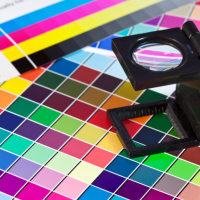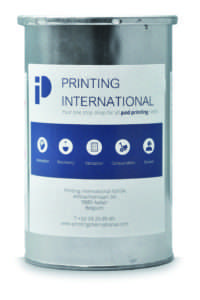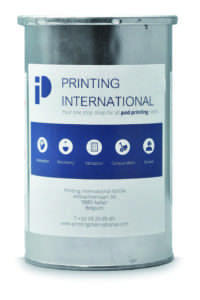PAD PRINTING INK
Printing International provides pad printing ink that is specially designed for the pad printing process. We have a pad printing ink suitable for all kinds of applications, such as medical, cosmetic, automotive, promotional, apparel, and electronic objects, as well as appliances, sports equipment and toys. Solvent ink is largely used as a common pad printing ink.
PAD PRINTING INK MIXING
Printing International has built a large library of existing colours, which stores existing matches and ink formulations for all of our pad printing ink ranges. If the colour requested is not an existing colour, our ink technicians will use highly accurate calibrated measurement tools and experience to define the colour and match the target. Multiple technologies from human eye to spectrophotometers will be used to match pad printing inks to nearly any shade on any printable substrate.


PAD PRINTING INK TYPES
There are different types of ink for pad printing. Standard solvent-based inks are the most common and come in two variants; one and two component ink. Then there is also the UV, glass and ceramic inks.
FOR DIFFERENT APPLICATIONS
We offer inks for all kinds of industries, but mainly focus on inks for:
- pharma: edible ink
- food: edible natural colors ink
- ecological: exclude polluting components
- medical device: inks for marking medical devices
- toys: exclude 19 elements
- automotive: excludes certain substances
Our inks conform to the most common guidelines worldwide such as: EuPIA, GADSL, RoHS, EN 71/3, REACH, USP CLASS VI, cGMP, GAMP5, FDA.

How to choose the correct pad printing ink?
There is a technical data sheet for each ink, stating what it is suitable for. This sheet also states whether or not pre-treatment or post-treatment is necessary. It can also be deduced from this that several inks are suitable for some products.
The most important selection criteria for an ink are the following:
- coverage power
- adhesion of the ink on the product
- resistance to chemical products, wear resistance
- glossy or matte
- light resistance
What are the most important components of a pad printing ink?
These inks consist of the following components: resins, pigments and thinners. The resin, also called binder, is the most important component, together with the special additives, the binder is responsible for the mechanical properties of the ink film (adhesion, abrasion resistance, scratch resistance and drying). The pigments are the dyes that are mixed in the resin. The thinner (see additives) ensures that the viscosity of the resins and pigments is adjusted to the desired printing properties of the pad printing ink. After printing and curing, only a very thin ink film remains on the product.
Ink-related problems during pad printing
INK DOES NOT SHOW SUFFICIENT ADHESION ON SUBSTRAT?
INK SPLASHES ON SUBSTRATE – SPIDERWEB EFFECT?
Other problems?
Download the Troubleshooting guide from the pad printing experts of Printing International with the most common problems and solutions hier
Can pad printing ink be used on all materials?
There exist a whole range of different ink types, with this range you are able to print onto almost any kind of material, such as:
- Acrylonitrile butadiene styrene (ABS)
- Acrylonitrile styrene acrylate (ASA)
- Aluminium
- Cellulose acetate
- Ceramics
- Chromium-plated surfaces
- Coated surfaces
- Cotton
- Duroplastics (phenolic and melamine resins, glass-fibre reinforced polyester and epoxy resins)
- Glass
- Gold-plated surfaces
- Leather
- Metals
- Nickel-plated surfaces
- Rhodium-coated surfaces
- Paper
- Plasticized PVC
- PMMA (acrylic glass)
- Polyacetal (POM, with flame-drying)
- Polyamide (PA)
- Polycarbonate (PC)
- Polyester (PES)
- Polymer blends like PC/ABS
- Polystyrene (PS)
- Polyurethane (PU)
- Pre-treated polyolefines, i.e. polypropylene (PP), polyethylene (HD-PE, LD-PE)
- Rigid PVC
- Rubber
- Silicone rubber
- Styrene acrylonitrile resin (SAN)
- Synthetic leather
- Thermoplastic elastomers (TPE, TPU, TPS, soft-touch coatings)
- Wood
Download THE BROCHURE
Please fill in your contact details





